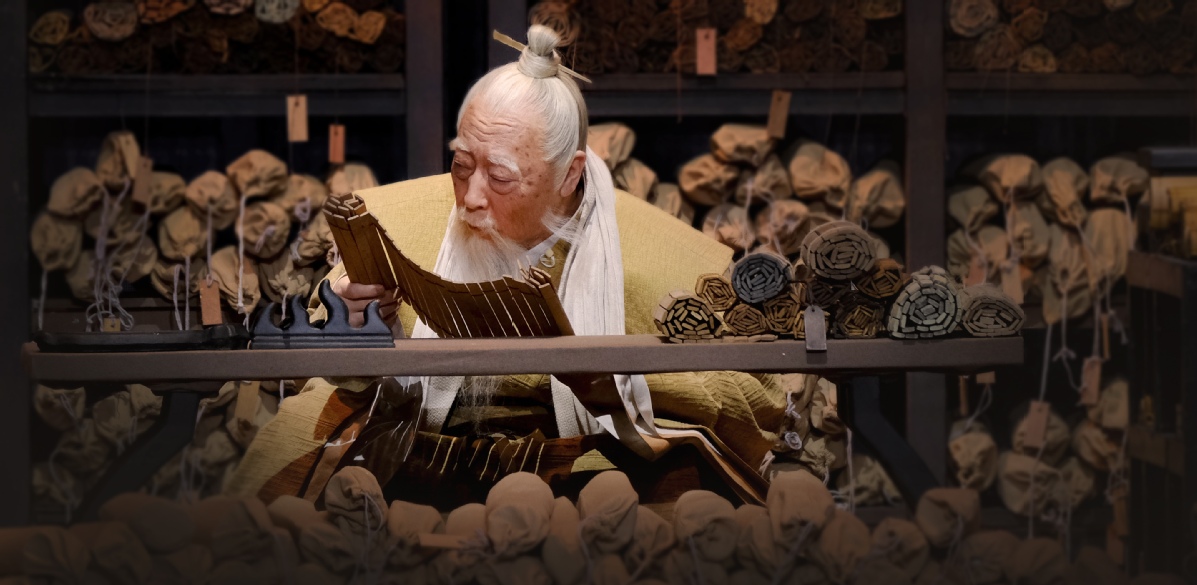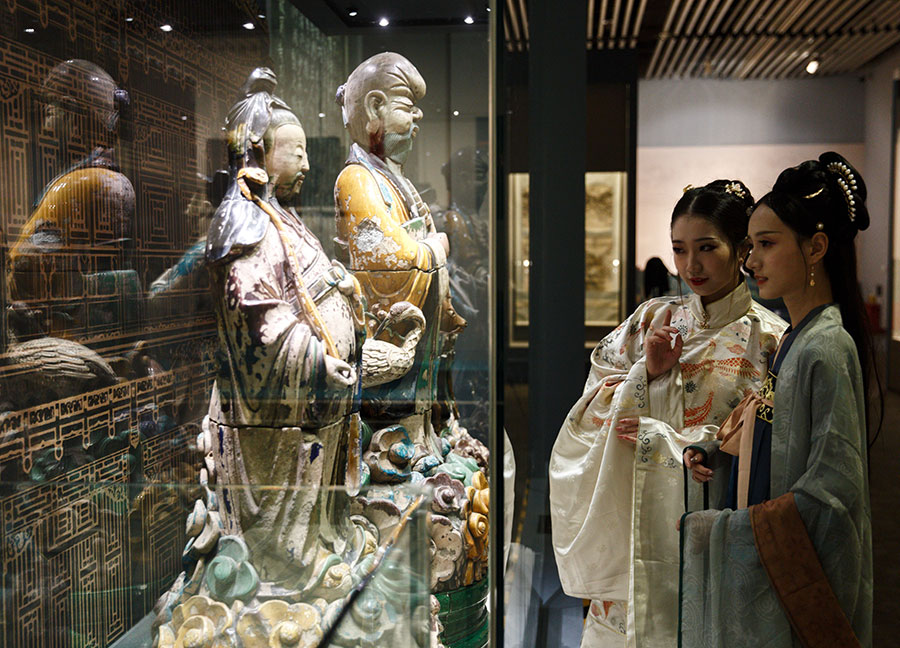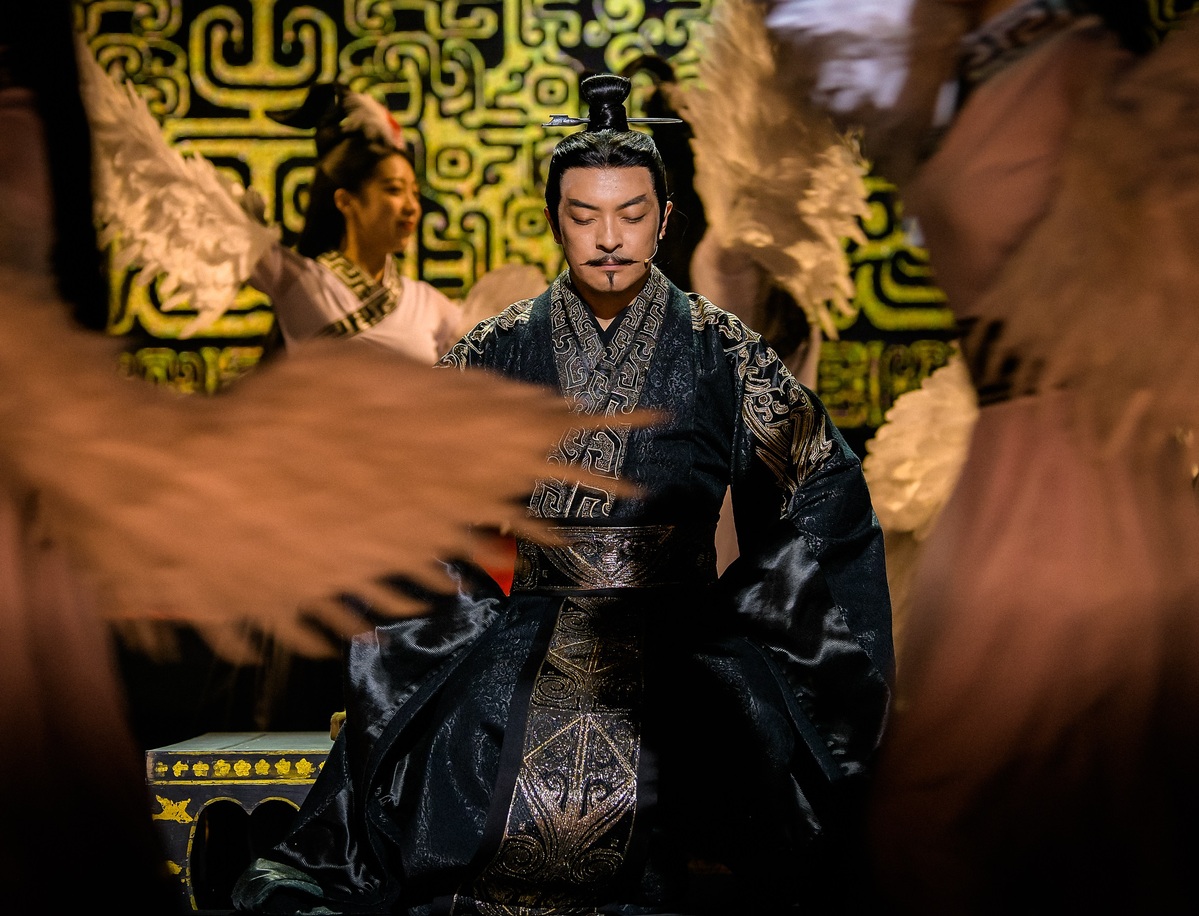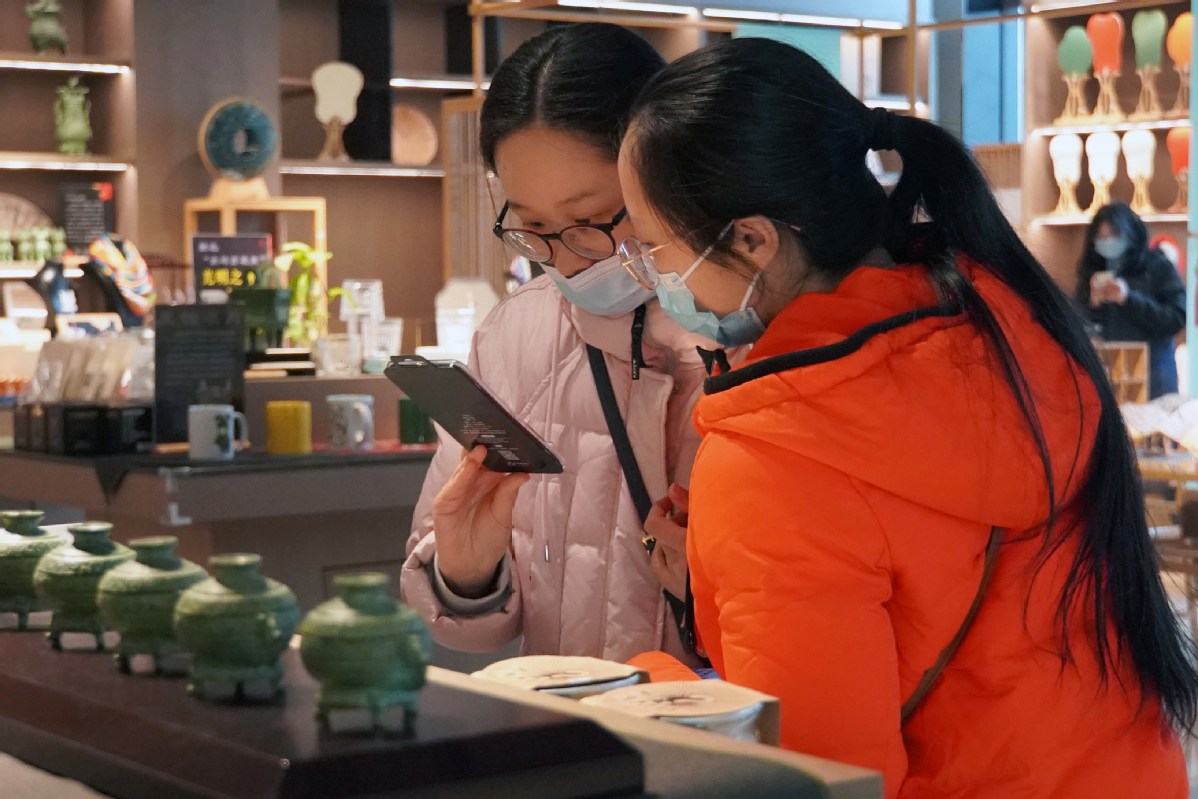 >
国际
>
国际
Classic Chinese tales thrive in modern times
发布时间:2021-04-01 10:42:05 | 来源:China Daily | 作者: | 责任编辑:杨俊康
Ni Dahong, playing the role of Fu Sheng, an ancient scholar known for his protection of Shangshu, in the China in the Classics television program presented by China Central Television. Photo provided to China Daily
Ancient cultural relics, archaeological finds and literature gaining in popularity with young viewers, Wang Kaihao reports.
If it were not for a TV show, Fu Sheng, a scholar who lived during the 3rd and 2nd centuries BC, may have remained an unfamiliar entity to the modern generation.
However, what this scholar painstakingly protected, amid wars and social upheavals, is something that is of paramount significance and considered a classic text by Chinese literati throughout history.
Shangshu, or the Book of Documents, one of the"five classics" of Confucianism, is a collection of prose attributed to the rulers of early Chinese history, which was first compiled during the Western Zhou Dynasty (c.11th century-771BC). Considered a cornerstone of Chinese political philosophy, many of the surviving chapters of the book are from the oral accounts of Fu Sheng.
When the scholar's story was adapted as a stage play for China in the Classics, a variety program presented by China Central Television, audiences were not only enthralled but captivated by an ordinary man's strength and resilience to preserve and pass on a country's cultural ethos.
Nevertheless, it was not an easy task for Tian Qinxin, head of the National Theater of China and the art director of the show, to transform an ancient classic, with its obscure language and detached context, into a one-hour-odd stage show that connects with the people of today.
"The stage is like a miniature film studio," Tian told China Daily."We have used a blend of expressions and stage performances for our television show... If we had just focused on academic aspects, we would have ended up with a stereotype show."

Wu Yue (second from left) playing the role of King Wu of the Western Zhou Dynasty, in a chapter from the book Shangshu, which shows how the system of governance was formed in ancient China. Photo provided to China Daily
China in the Classics is currently in the limelight at the ongoing"two sessions" in Beijing, considering that top-level legislators and political advisers are holding discussions on using creative techniques to revitalize traditional culture.
The 11-episode China in the Classics-which features one classic Chinese book of ancient times in each episode-has received overwhelming praise from viewers. On Douban.com, China's main film and TV critic website, it gained 9 points out of the total 10.
"When we talk about the promotion of traditional culture in a modern context, it is important that it stirs the national spirit and instills creativity," said Tian, who is also a member of the 13th National Committee of the Chinese People's Political Consultative Conference."You have to be true to the history, and keep the narrative vivid and focused. We want people to understand why they are called classics and how they have been integral in the formation of certain elements in our cultural tradition."
Tian and other directors of the show used Fu Sheng's personal experiences and developed specific storylines from two chapters in Shangshu.
One is about Yu the Great, a legendry ruler who was believed to have lived around 2000 BC. He has been venerated for leading the fight against cataclysm and uniting the nine regions, a prototype of China's territorial division throughout history. The other is about King Wu of the Western Zhou Dynasty, who was instrumental in ending the tyranny of the last ruler of the Shang Dynasty (c.16th-11th century BC) and establishing a central government that focused on people's livelihood and the country's prosperity.
"Through the classics, we can see the foundations of modern China, including the political system and the ideas for governance," said Tian."No matter how the history has evolved, their influence is still intact. The classics remind us not to forget our origins and explain where our cultural confidence comes from."
"China in the Classics reminds us that the ancient Chinese culture is not obscure or antique," Shen Haixiong, head of China Media Group, the parent of China Central Television, said in an article published in Qiushi Journal, the flagship magazine of the Central Committee of Communist Party of China, on Monday.
"Classics are the cultural genes that carry the vitality of the nation," he said."A TV show lets rich history shake hands with modern expressions. It is favored by young people and makes classics'alive'. Its popularity proves the charm of creativity."

Dancers from the Zhengzhou Song and Dance Theater dressed in Tang Dynasty (618-907) costumes perform A Tang Dynasty Banquet, a five-minute dance, in Henan Museum on Feb 20. LI AN/XINHUA
Striking a fine balance
Starting from the first season of The Nation's Greatest Treasures in 2017, a variety show featuring highlighted collections in Chinese museums staged by China Central Television, creative programs promoting traditional Chinese culture have mushroomed on television screens.
Most of these shows used A-list celebrities to showcase the national treasures, thereby ensuring that the cultural relics strike a chord with young viewers.
Lyu Yitao, a member of the 13th National Committee of the CPPCC and a director of China Media Group for variety shows, believes that the success of such programs is a reflection of the social development of China in a new era.
"The young generation, especially those who are born after 1995 or 2000, grew up at a time when Chinese people's lives are much better and our national strength is rising," said Lyu."They will naturally feel proud of and nurture a stronger curiosity of our own culture. The reason why such programs are popular is that they meet the audiences' need for culture at a deep level."
The previous two seasons of the show have been, or are in the process of being, translated into eight languages to be broadcast worldwide.
In spite of the previous reputation, continuous creativity is needed to meet people's differing tastes. In the third season of The Nation's Greatest Treasures, which premiered in December, homes of the treasured artifacts went beyond museums to larger heritage sites, which are"treasures" per se as well.
"We have tried to strike a balance between the rigorous popularization of knowledge and an entertaining format," Lyu said."It's a way to link tradition and fashion."

Visitors dressed in traditional Chinese costumes check out ancient statues displayed at an exhibition to commemorate the 270th anniversary of the Summer Palace construction in Beijing in September. JIANG DONG/CHINA DAILY
Sometimes, such links of tradition and fashion on TV can create strong momentum, often beyond expectations, thanks to social media.
Last month, as numerous TV stations around the country made their own galas for the Spring Festival season, A Tang Dynasty Banquet, a five-minute-long dance on Henan TV featuring cultural relics, was perhaps the shiniest piece among the repertoires.
Fourteen dancers from Zhengzhou Song and Dance Theater dressed in Tang Dynasty (618-907) costumes, inspired by the glazed pottery figurines in Henan Museum, performed the dances. Augmented reality technology was used to mix other key collections from the museum into the performance, like an 8,000-year-old bone flute and a bronze wine vessel in the shape of owl dating back for over 3,000 years. The dance attracted over 2 billion views online, while relevant posts received 500 million clicks on social networking service Sina Weibo.
"New technology can bring more immersive experiences for those who worship cultural relics," said Ma Xiaolin, director of the Henan Museum."It makes dialogue possible between the past and present, and makes history tangible for the younger generation."
Ma, who is also a member of the 13th National Committee of the CPPCC, said the museum received 8,000 visits daily during the Spring Festival holiday after the gala was broadcast, the maximum number allowed due to the COVID-19 restrictions.
On Feb 26, the Lantern Festival, the troupe staged a sparkling comeback, using the same approach to present a 30-minute online show, with the Henan Museum and other key cultural heritage sites in the province as backdrops.
"Thanks to cooperation between cultural heritage organizations and various media platforms, we have been able to offer a series of cultural products to the general public," said Ma."But such a fad is not beneficial for ever. We have to embrace new platforms and not wait for more people to come to our venues."
Nevertheless, Ma feels that it is important to avoid excessive entertainment, as the focus shifts to increasing online flows through eye-catching gimmicks, rather than the revitalization of traditional culture.
"Social media makes information fragmented, but it's not that negative," Lyu added."Culture thus has more chances to fill gaps in people's lives. It's time to use these fragmented information as teasers and attract more people to explore traditional culture at a deeper level."

A play staged during the third season of The Nation's Greatest Treasures explains the historical background of a key bronzeware unearthed from Mausoleum of Qinshihuang in Xi'an. Photo provided to China Daily
Finding wider audiences
Wang Wei, president of the Chinese Society of Archaeology and a deputy to the 13th National People's Congress, agrees that the next phase of programs on traditional culture should transcend the"treasure" quotient.
This year marks the 100th anniversary of the founding of modern archaeology in China, following the discovery of the Yangshao Neolithic culture, around 7,000 years old, in Henan province.
Wang is currently cooperating with China Media Group to produce a variety show called Chinese Archaeology Conference. Though Wang did not reveal too many details about the show, he said the original idea of making just a quiz contest has been changed considering that such a format could distract attention about the significance of key archaeological discoveries.
"When it comes to such productions, there is not much that China has as reference as most of the similar overseas programs use the documentary form for narratives," he said."We have made some achievements but that does not mean that we are satisfied with the current results. Cultural heritage values still need to be elaborated."
Wang, a leading archaeologist in China, said scholars need to be better trained in media interactions as the general public is becoming"more professional" due to the popularity of such TV shows in the past few years.
"People's interest in archaeology is sometimes beyond our expectations," said Wang.
Last year, online livestreams were organized for the first time to show the final round of appraisals to choose the country's 10 best archaeological discoveries. To Wang's surprise, the sessions full of archaeological terminology attracted over 28 million views. Since then, using livestreams to introduce the latest discoveries to the public has become a common practice for Chinese archaeologists.

Tourists purchase souvenirs at a store in Henan Museum, which released a"mystery box of archaeology", in December. YUAN YUEMING/XINHUA
"Archaeologists used to fully focus on their research and academic papers behind closed doors, but now they have to care about how to explain their findings to a wider public," Wang said."I don't think it's an extra burden because it's meaningful to let their less-known research influence tens of millions of people beyond academia.
"And archaeological excavations are supported by taxpayers, so it's also our duty to brief our'shareholders' about our work," said Wang.
Thanks to the booming interest in archaeology, Chinese public are not satisfied with just being bystanders before screens. In December, Henan Museum released a toy-"mystery box of archaeology"-through its online stores, enabling numerous"amateur archaeologists" to feel the joy of excavation at home.
About 600 such boxes were available every day initially, but were sold out within minutes, becoming one of the most popular museum souvenirs in China recently. Ma told China Daily that more than 130,000 mystery boxes had been sold by Wednesday, precisely three months after its release, for a total sales revenue of 11 million yuan ($1.7 million).
"People can experience the pleasure of archaeological discoveries and learn culture," Ma said."It shows that traditional elements can be explored in an easily understandable manner."
He Yun'ao, an archaeology professor at Nanjing University and another member of the 13th National Committee of the CPPCC, said creatives are just one facet of the booming traditional culture in daily life.
"After decades of reform and opening-up, China has entered an era when traditional culture naturally gets revitalized, especially after the 18th National Congress of the Communist Party of China," He said.
"Following globalization on a deeper level, Chinese people now want to find their location in the world's stage beyond economic status, and the best way is to look back on our outstanding and unique culture," said He."The new programs and products are a reflection of that trend."


